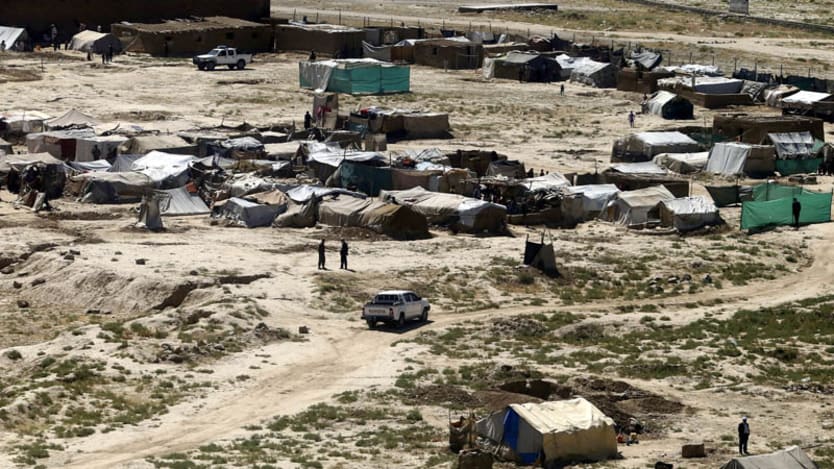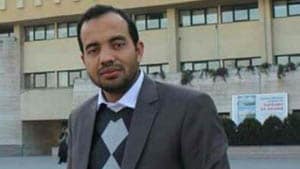
“We tell his 4-year-old daughter when she cries and asks for her dad that Khalil works during night shifts now,” says Khalil Rahman’s brother. Khalil is among the many people missing since the horrible attack of May 31 in Kabul that left more than 150 dead and hundreds more wounded. There is no trace of Khalil among the wounded or the identified bodies.
Khalil Rahman was my colleague in the budget department in the Ministry of Finance in Afghanistan. Khalil was one of those few fortunate young Afghans who emerged from a village where the standard of life is unchanged from what it was like in the 1960s, despite global advancements in communication and transportation. He was newly graduated and hired to work in the Ministry of Finance in 2009 as part of a capacity-building program aimed at strengthening the government’s systems by enabling young Afghans to replace donor-funded technical assistants.
He was a shining, dedicated and enthusiastic colleague who worked hard for a meager salary. Civil servants in the government earn around $200 per month, as compared to thousands of dollars paid to foreign advisors. Many graduates were lured by higher salaries to work for donor projects and NGOs. But Khalil stayed working with the government.
Khalil comes from Wardak, a province south of Kabul where he would go every weekend to see his family since he couldn’t afford to rent a house big enough for them all in Kabul. Life outside the capital in provinces such as Wardak is not easy. Citizens live with the threat of being killed by insurgents (especially if one works for NGOs or the government), being mistakenly targeted in bombardments by international forces, stepping on landmines or being caught in nighttime raids against insurgents just because one happens to live in a village with insurgent presence. This has been a trend for the past three and a half decades. It is hard to imagine that Khalil survived the many threats he was exposed to on a regular basis in the provinces, only to have his life taken from him right in the heart of Kabul.

Khalil Rahman’s story is the story of millions of Afghans who have survived for decades in the face of multiple threats. I remember during the late 1980s, when Khalil would have been 10 years old, we Afghan students in the areas under Mujahideen control or in refugee camps were taught math in non-government schools through illustrations of weapons (such as AK-47s, rifles, bullets and grenades). For example, 2 rifles plus 3 rifles is equal to 5 rifles. The aim was to prepare us to become holy warriors to fight against Russian occupation in Afghanistan and the Russian-backed regime.
Yet the aftermath of Russian occupation was similarly characterized by a decade-long conflict, and the Taliban regime brought no improvements for our people. Ironically, many of those students who learned by calculating weapons became bright, hopeful young Afghans, like Khalil, despite what their education had tried to feed into their minds. Those curricula failed to turn the young generation into war machines. Good-hearted human kindness and the hope for a better Afghanistan won out.
Young people like Khalil Rahman have the option of migrating — often illegally — to Europe in search of a better fate, but many choose to live with the hope of a better future for Afghanistan, accepting the risks of staying. Their survival in the face of tremendous challenges demonstrates their resilience. This resilience is at odds with popular ideas of countries such as Afghanistan as fragile, weak or failed. These designations are determined by impersonal indicators developed in Washington, New York or Paris.
Those indicators do not, however, measure the extent of resilience that people demonstrate on a daily basis in surviving periods of barbaric crisis and violence. Those indicators do not capture the strength required by mothers to send their children to school every day — or by fathers and husbands to travel dangerous routes to undertake jobs that aim to improve their country. Yet it is the stigma of fragility or failure that characterizes their identity in the eyes of the rest of the world. This stigma of fragility and failure becomes a tangible obstacle in the lives of people from countries such as Afghanistan when traveling, for instance, with their national passports means they are denied entry into most countries. The strength and resilience of these people is forgotten.
The suffering experienced by people living in conflict-affected countries is by far the biggest cost of wars and crises. Nearly 11,000 civilians were killed or wounded in 2016 in Afghanistan in attacks similar to the one on May 31 that killed my friend Khalil Rahman. How many children are lullabied with false hope of the imminent arrival of their fathers? One-third of those killed are children who would become the future of this war-torn country. They would constitute the human capital needed to rebuild Afghanistan.
I do hope, by some kind of miracle, that Khalil returns to his 4-year-old daughter. But her cries are the reality of millions of children who are deprived of their parents by extremism, violence and conflict. They will grow and in turn dare to hope for a peaceful future where their own children can sleep in peace. Until then, Khalil’s daughter’s sobbing is an alarm bell for the world. A fanatic extremist who takes innocent lives only to live his wild and elusive dream of going to paradise may not hear the cries of Kahlil’s 4-year daughter.
However, I do hope that the international community and regional players realize that the need for sustainable peace is an absolute reality and thus central to their diplomatic, political and military might on making peace in Afghanistan and elsewhere a reality. Because pain of losing a loved one is the same everywhere, whether it is in Kabul or Peshawar, London or Paris, New York or Istanbul.
Join the Devex community and access more in-depth analysis, breaking news and business advice — and a host of other services — on international development, humanitarian aid and global health.
